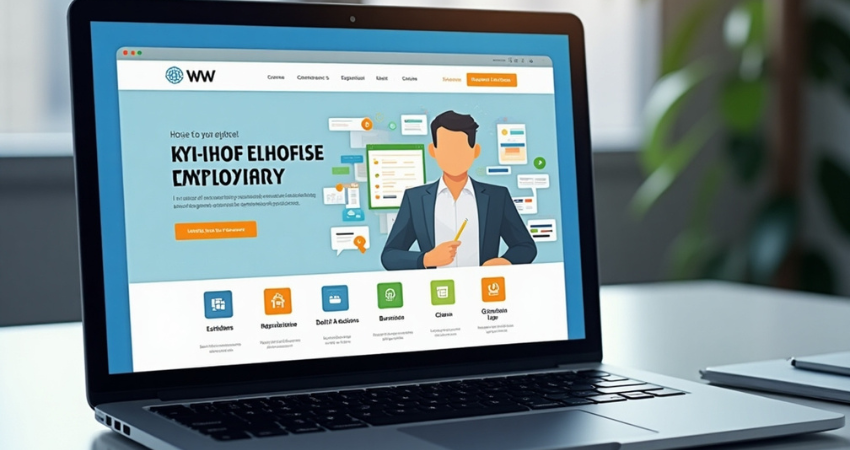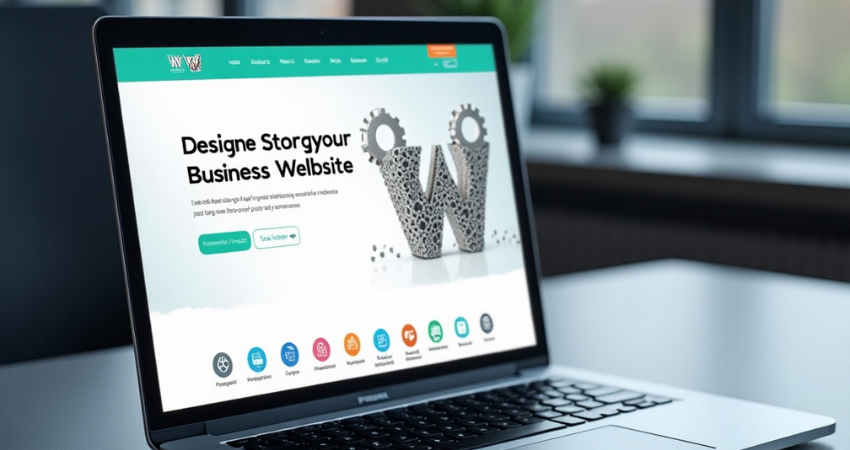Clear Purpose and Messaging

The most important factor in a well-designed business website is, of course, clarity. If visitors cannot find out what your business does just a few seconds after landing on your website homepage, they will bounce. Everything – from the logo to the navigation to the headings – should support one and only one clear message. And that message may be selling a product, promoting a service, booking for a consultation, or just brand-building purposes. But it will never be vague.
Think of it that way: this is your digital storefront. If your purpose is not clear, it is like walking into a store and not knowing what is on sale there. Your users shouldn’t need to dig to understand your value proposition. A strong headline, backed up by a supportive subhead line and a short benefits-rich paragraph, can make the difference between guiding your visitor through the experience along the way or absolutely losing him.
Think of your target audience as well. What sort of language appeals to them? What problems are they trying to solve? In answering their need clearly and assertively, you’re showing that they are in the right place.
Another component of this is to let users be free from information bombardment. Do not stuff every information in the homepage, eye-catching and intuitive design would lead users to navigate into your site further. Then clarity will be your greatest marketing, export in a more structured manner your design with respect to customer engagement and conversion.
Intuitive Navigation
Good user experience has a strong intuitive navigation backbone. Visitors will leave quickly if they cannot find what they’re looking for, usually frustrated. Hence, successful business websites have clean, well organized menus that are easy to follow according to a logical hierarchy. Simplicity is the key here. Whether a top navigation bar, a sidebar menu, a sticky header, or all three, the layout should help people move easily through your content.
However, it should all feel predictable-in a good way. Visitors should have no trouble knowing where to go when looking for contact information, services, pricing-the essentials- without having to think too hard about it. Don’t do vague words like “Stuff” or “More.” Use “Services,” “About,” “Contact,” or “Shop,” as appropriate for your business model.
An often forgotten section is the footer. This is an ideal area for sitewide links like social media profiles, privacy policy, FAQs, or even newsletter signups. A well-built footer can very easily work like a second navigation zone.
And don’t forget the mobile experience. Menus have to collapse nicely into a hamburger icon and open smoothly. Dropdowns must be able to be tapped easily, and there must be generous spacing to avoid mis-clicks. If your users feel lost on mobile, you will lose conversions.
Ultimately, intuitive navigation isn’t just about structure-it’s about reducing friction. The easier it is to get around, the more likely it is for users to stay and explore and interact with your business.
Fast Load Times

Timeliness, in this digital-centric world, should be taken for granted. In modern times, by the time your website loads for a second or two, you already have lost visitors. Page speed has been one of the top contributory factors deciding the bounce rates and ranking in search engines. An ideally designed business website should load quickly across all devices, thereby allowing people to access the content without delay.
Load time optimization means first writing clean code and lightweight design. Avoid heavy themes and unnecessary plugins, especially on WordPress. Also, compressing images, turning on browser caching, and CDN can give a heavy boost to speed for your site.
Now speed is not just a technical aspect but a psychological aspect. The faster all the content appears after the user clicks the link, the more trust will be built. If the loading is faster, it will be assumed that the website owner respects a visitor’s time and experience. On the other side, slow loading websites are regarded as unprofessional and lacking credibility, no matter how great the content is.
Google considers load times in consideration of rankings. Therefore, improving speed will benefit the users as well as in SEO. The tools for analyzing speed such as Google PageSpeed Insights or GTmetrix will help you figure out where you stand and what can be improved.
Keep in mind, your website is often the first impression someone gets of your business. Make sure it is a great one, delivering a fast experience that screams speed, polish, and action.
Conclusion
A well-structured business website is not only expected to be good-looking but also good-performing. A website must reflect a brand’s identity, communicate a message well, and instill enough confidence in every visitor to compel action-whether it be making a purchase, booking for a service, or simply learning more about what is offered.
We discussed 15 traits that contain the heart and soul of a successful business website. From clear messaging to fast loading times, enticing calls-to-action, and designs that foster trust, everything matters. And it is not about perfection; it is about intention. If your design assists a user to navigate with ease, find what they need in short order, and interact without friction, then you have already won half the battle.
Remember that websites should never be a one-time project. It keeps changing with the business and the ever-changing needs of the audience. Frequent updates, testing, and tidying up with the design keep the site current and functional over time. Use analytics to understand what is working and where users may be getting stuck.
Finally, always think about the users-their actual wants, how they will reach your site (desktop, mobile, tablet), and how to make their experience easier. This thought process, with the user always coming first, is what distinguishes forgettable websites from those that really create the impact on growth.